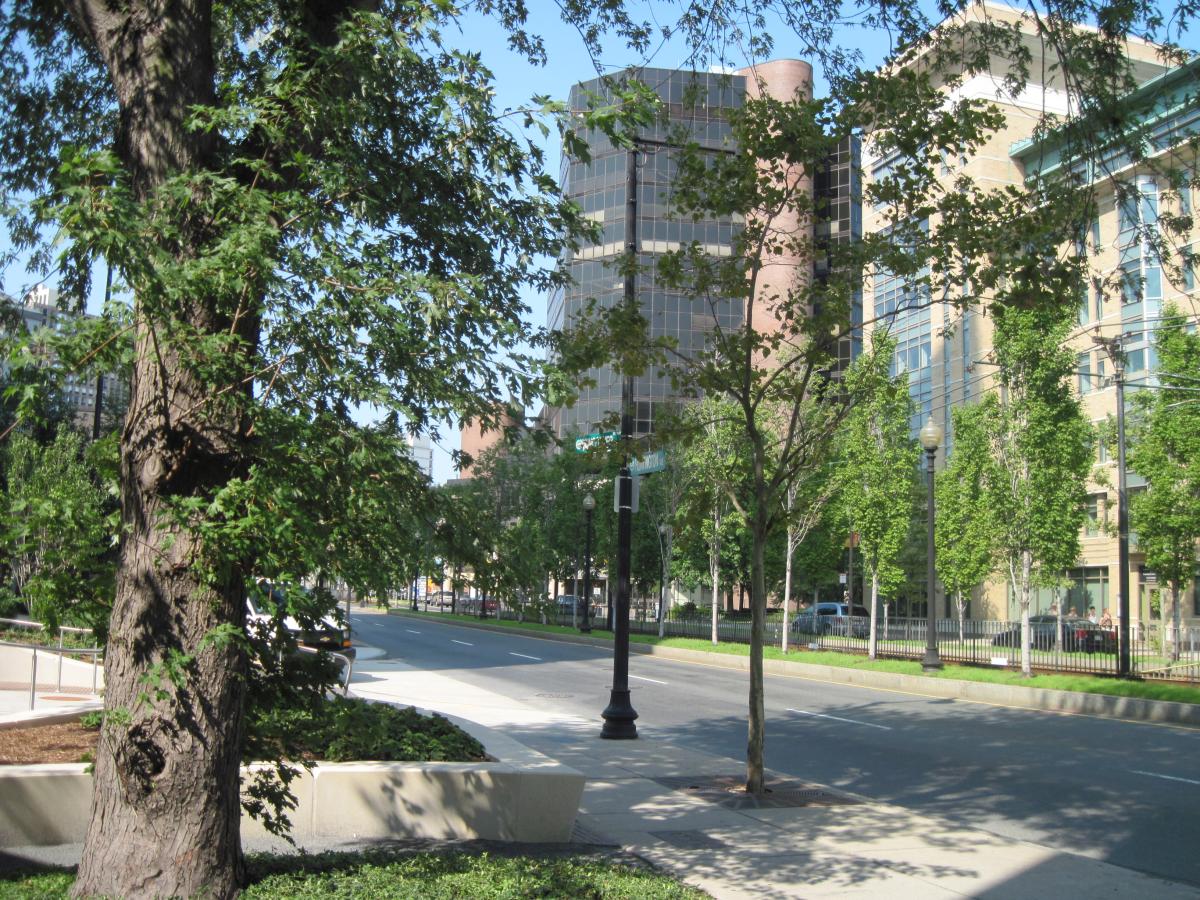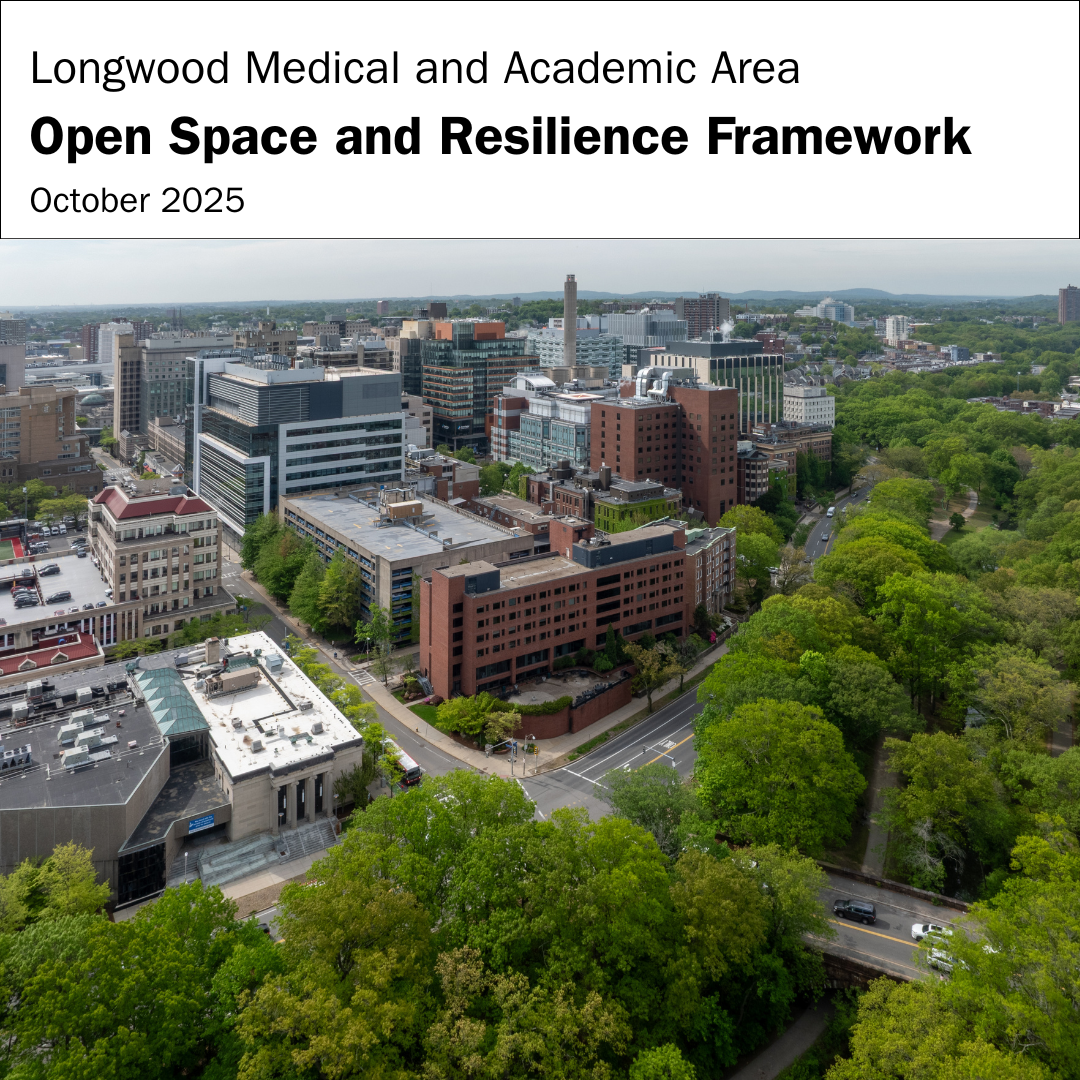

At Longwood Collective, we focus on sustainability by bringing institutions together to share best practices and expertise to solve common problems. Collaborations have included:
Waste reduction through increasing composting and recycling
Laboratory adoption of energy efficient -80 degree freezers
Donation of used lab equipment
Purchasing of products with ACT Labels (a sustainability nutrition label for lab products)
Most recently, we have joined efforts with our member institutions to develop a comprehensive plan to guide climate resiliency and protect open space in our district. In this Open Space and Resilience Framework, we lay out a bold vision for the future of Longwood: rain gardens and green roofs that absorb storms, a healthier urban forest to cool our streets, and a better-connected open space network that benefits the entire district. These strategies not only protect our infrastructure and open spaces, but they also ensure Longwood remains a thriving, world-class hub for care, research, and innovation.

The Framework translates climate data, modeling, and spatial analysis into six actionable strategies to manage these risks while strengthening the district’s livability, connectivity, and open spaces. It builds on existing Longwood Collective programs such as tree planting and beautification, while aligning with Boston’s Climate Action Plan and Urban Forest Plan. Developed with input from Longwood’s world-class institutions, the Framework serves as a practical toolkit for coordinated, districtwide resilience projects in the years ahead.
The Framework identifies six priority strategies for advancing resilience and open space:
- Construct Green Infrastructure: Use rain gardens, bioswales, and permeable pavers to manage flooding, reduce heat, and support ecosystems.
- Build & Maintain Tree Canopy: Expand and care for the urban forest in coordination with Boston’s Urban Forest Plan.
- Connect Open Space Network: Link plazas, parks, and greenways to improve access, health, and community connection.
- Advance Sustainable Development: Ensure new projects add green space, fund environmental mitigation, and support transit infrastructure.
- Expand Beautification Program: Grow landscaping efforts — planters, hanging baskets, and raised beds — to create inviting outdoor spaces.
- Reduce Fossil Fuel Dependence: Promote microgrids, renewable energy, and electrification to cut greenhouse gas emission
The district is already putting these strategies into action. The Longwood Collective recently joined stakeholders and community partners to break ground on a bioswale pilot project on Avenue Louis Pasteur, adjacent to the Muddy River. The three-year project will replace aging trees with a surface-level rain garden and a below-grade filtration system, capturing and filtering stormwater to restore watershed health. The initiative demonstrates how thoughtfully designed green infrastructure can both protect against climate impacts and enhance community spaces, while supporting Longwood’s ongoing sustainability efforts on behalf of its member institutions.
